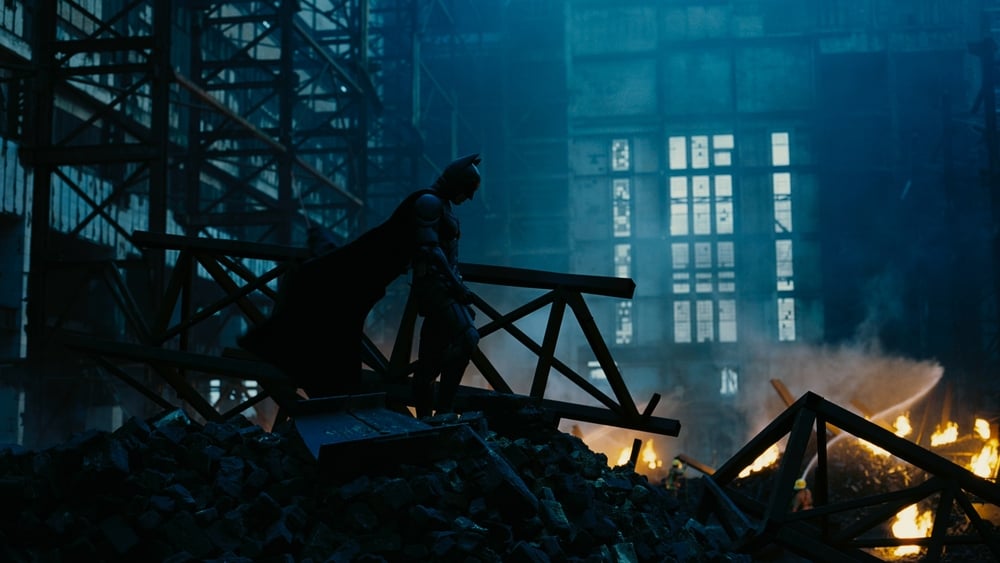Christopher Nolan’s “The Dark Knight” wasn’t the first great superhero movie, nor was it the last — one could argue it wasn’t even the first or last great Batman movie. But it is the film the rest of the genre has tried to emulate in the 15 years following its release. Sometimes other films try to recapture its darker, more cynical tone or they want to be recognized with the same prestige, the same reception that played a major hand in the Academy Awards expanding the number of films that could be nominated for Best Picture. But whatever their aims, all superhero films that have come in the wake of “The Dark Knight” have failed to escape its looming shadow.
The difference between “The Dark Knight” and the rest of the superhero genre is that Nolan’s film attempts to create iconography while the rest attempt to recreate it. Nolan’s film has remained in the culture far longer than its contemporaries because it used templates not associated with the superhero genre to create something fresh. Nolan didn’t make a comic book film, he made a crime epic that used the pastiche of Batman characters and locations and put it on the canvas of a recognizable, major American city. Gone are the days of Gotham being created with lavish production design with campy colors and costumes — a fictional place with fictional people and fictional problems. Nolan sets out to make a film about America, about the country’s real anxieties and its real contradictions in a post-9/11 world.
Nolan’s Batman films all deal with the post-9/11 world in one way or another, but “The Dark Knight” is the best combination of thematic ambition and effective execution. How much freedom is worth giving up to stop one terrorist? How can fear and grief turn good, honest men into monstrous oppressors? The way Nolan tackles these topics is often broad and blunt. His commentary is never as biting as it could be, but it is about as nuanced as this kind of thematic storytelling can get in a big summer blockbuster. Other films like it rarely attempt to say something bold about the real world — if the superhero genre gets political at all, it’s often a manufactured issue that has a clear right and wrong. In contrast, Nolan’s film is much more interested in moral ambiguity. Lucius Fox explicitly states “No one man should have this much power.” about Batman’s use of intrusive surveillance technology to stop the Joker, but that technology is what helps Batman defeat him. The dissonance between the thoughts and the actions and results creates a moral gray area that Nolan leaves up to the viewer to parse.
No other superhero film has attempted to deal with real-life issues and politics in the way “The Dark Knight” (or its sequel and prequel) have. At best, politics are thrown in as window dressing for more personal stories. The Marvel Cinematic Universe, in particular, is too interested in its characters’ struggles to tell as ambitious a story as the one Nolan wants to tell. Sometimes this works to great effect, as the “Guardians of the Galaxy” films have been able to create moving works of pop entertainment by exploring trauma and found family. But oftentimes the superhero genre fails to leave an impact, failing to capture the moment in which these films are produced and, as a result, feeling more disposable when the next installment comes along a few months later.
It certainly helps “The Dark Knight”’s case that nobody that has made a superhero film in its wake does spectacle better than Nolan. Most of that can be attributed to how tactile the film feels, especially relative to most of the digital sludge that comes out of the genre now. Nolan is known for loving his practical effects, and even though plenty of digital effects are used to hide the seams, what you’re seeing on screen is mostly there for the most part. Less crazy action may be happening on screen, but it’s more impactful because it feels real. You feel every punch, every car crash. The semi-truck flip stunt is still as thrilling as it was 15 years ago because the truck is being flipped. The more the genre has retreated into fantasy and digital effects, the less visually memorable it has become.
In the rest of the superhero genre, “The Dark Knight”’s ambition has only ever been matched by its sequel, “The Dark Knight Rises,” and it wasn’t executed nearly as well as its predecessor. Nothing has been able to match Nolan’s second Batman feature’s combination of narrative scope, formal beauty, and tragic, thematic weight. For 15 years, the rest of the genre has been playing catch-up. And with box office numbers slowing and interest fading, I don’t think the genre will reach those heights ever again.

